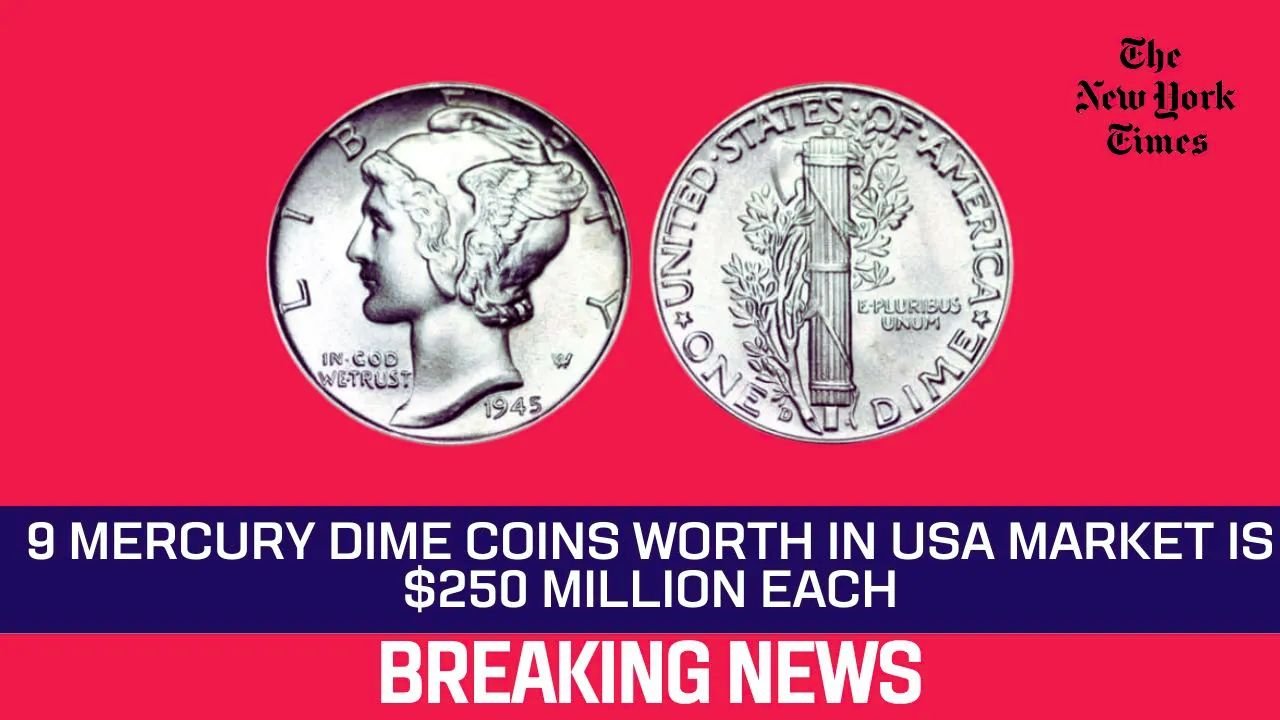In the world of coin collecting, Mercury Dimes are stealing the spotlight in 2025, with some rare pieces valued at an astonishing $250 million each. These small silver coins, minted from 1916 to 1945, aren’t just pocket change—they’re treasures that could be hiding in old jars or forgotten collections. Known for their beautiful design, these coins feature Lady Liberty wearing a winged cap, often mistaken for the Roman god Mercury. With certain dates, mint marks, and conditions driving their value through the roof, collectors are on a modern-day treasure hunt. Let’s dive into what makes these dimes so special and how you can spot one.
Why Mercury Dimes Are So Valuable
The Mercury Dime, officially called the Winged Liberty Head Dime, was designed by Adolph A. Weinman. Its front shows Lady Liberty with a winged cap symbolizing freedom of thought, while the back has a fasces—a bundle of sticks with an axe—wrapped in an olive branch for peace. What makes some of these coins worth millions? It’s all about rarity, condition, and history. Low mintage numbers, minting errors, and pristine condition can turn a 10-cent coin into a collector’s dream. For example, coins with “Full Bands” (FB), where the bands on the fasces are sharply detailed, fetch much higher prices due to their crisp strikes.
The Crown Jewel: 1916-D Mercury Dime
The 1916-D Mercury Dime is the star of the show. Minted in Denver with only 264,000 produced, it’s the rarest of the series. Many were used in circulation before collectors realized their value, leaving few in good shape today. A 1916-D in near-perfect Mint State 67 with Full Bands sold for $207,000 in 2022, and experts say a flawless one could hit $250 million in 2025 due to its scarcity and demand. Look for the tiny “D” mint mark on the back, near the bottom of the olive branch. Even worn versions can fetch thousands, so check your coins carefully.
Other Rare Gems to Watch For
Besides the 1916-D, other Mercury Dimes are climbing in value. The 1942/1 overdate error, where a 1941 die was stamped over with 1942, is a big one—some have sold for $120,000 or more. The 1921 and 1921-D dimes, with low mintages of 1.23 million and 1.08 million, are also hot among collectors, valued at $10,000 to $50,000 in top condition. Coins from San Francisco, marked with an “S,” like the 1926-S or 1919-S, can hit $6,000 to $144,000 if they’re in great shape with Full Bands. These coins are tough to find uncirculated, making them prized finds.
How to Spot a Valuable Mercury Dime
Want to know if you’ve got a fortune in your pocket? Here’s what to check:
| Feature | Details |
|---|---|
| Date | Look for 1916-D, 1921, 1921-D, or 1942/1 |
| Mint Mark | Check for “D” (Denver) or “S” (San Francisco) on the back |
| Condition | Sharp details, no scratches, and Full Bands boost value |
| Grading | Get it checked by PCGS or NGC for authenticity |
Use a magnifying glass to inspect the mint mark and condition. Even a worn 1916-D can be worth thousands, so don’t toss any old dimes without a close look.
The 2025 Market Buzz
The coin market in 2025 is buzzing, with Mercury Dimes leading the charge. Stories of rare finds—like a near-perfect 1916-D found in a coffee tin—have collectors and everyday folks alike checking their change. Social media and coin forums are lighting up with photos of potential treasures. Experts say demand is high because these coins combine history, art, and scarcity. If you think you’ve got a rare one, get it graded by professionals like PCGS or NGC to confirm its value. Who knows? That dime in your hand could be worth a life-changing sum.
So, next time you’re sorting through old coins, take a second look at those Mercury Dimes. With values soaring to $250 million for the rarest pieces, you might be holding a piece of history that’s also a ticket to a fortune.
